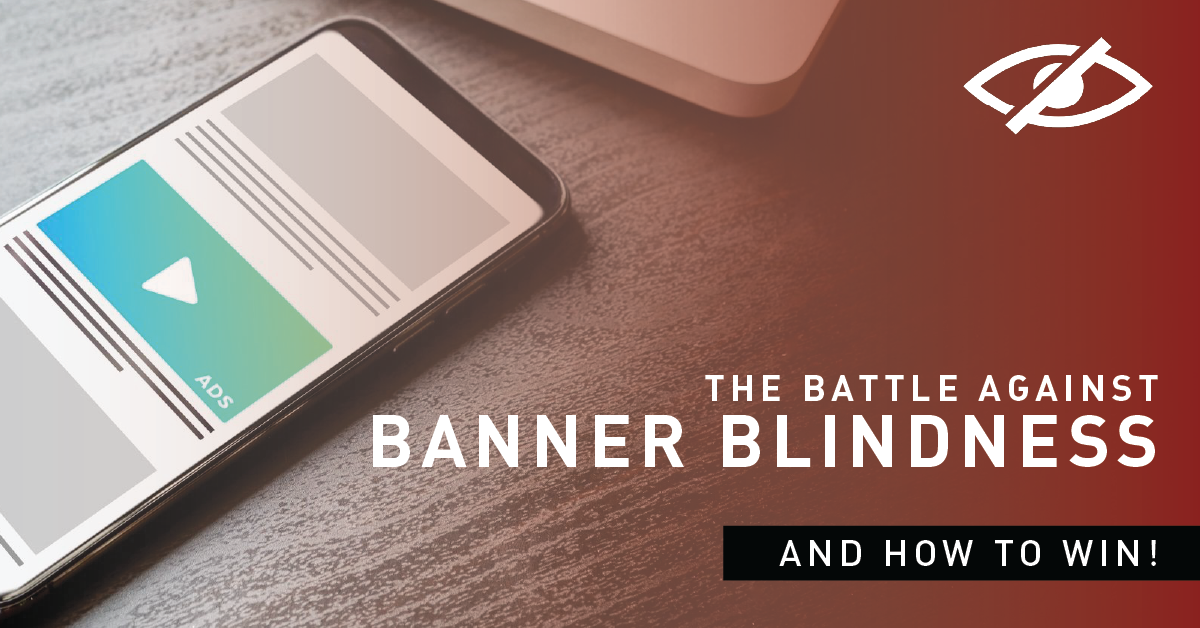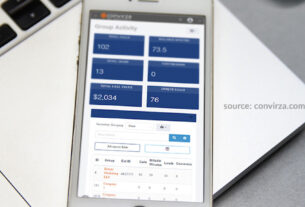The average internet user is served thousands of banner ads every month. Yet, most users struggle to recall even a handful, and fewer still actually engage. But why?
Contents
What is Banner Blindness?
Banner blindness is the conscious or unconscious disregard for page elements that are perceived to be ads. In other words, the tendency to scroll past what is assumed to be an ad, without batting an eye. The irony is, in doing so, users also lose out on advertisements that are relevant to them and sometimes even risk skipping parts of the actual page content.
As the information overload phenomena deepens by the day, people struggle to consume, verify, and comprehend the excessive content available at their fingertips. So, cybersurfers exercise selective attention to shield themselves from this whirlwind of information – focusing solely on what they deem useful, interesting, or relevant. A study on banner blindness by Infolinks revealed that only 2.8% of participants found website ads to be relevant – it is not surprising that users don’t find ads worth paying attention to, which explains their unfortunate fate of going unnoticed, unseen, and being easily forgotten. It certainly does not help that banner ads are so predictable in their dimensions and placements within a web page.
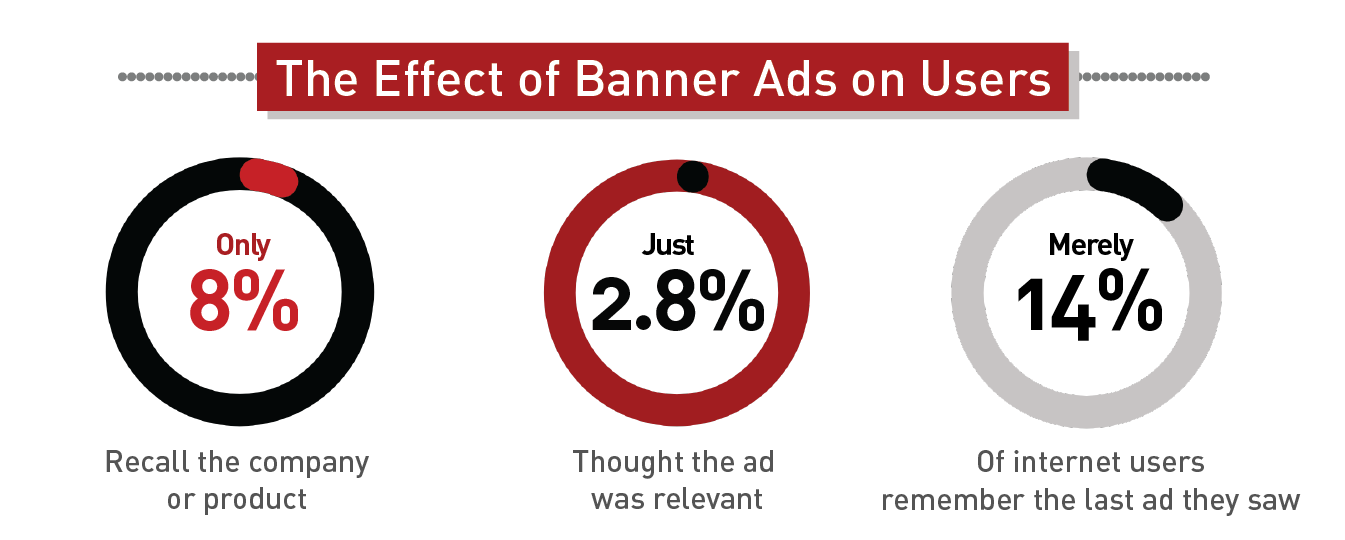
Over time, avoiding banner ads becomes second nature to users through the use of cognitive schemas by which knowledge, beliefs, and expectations on a certain subject are organised – and these schemas function as shortcuts for future experiences. When a user visits a new website, they recall stored schemas from past websites to help determine which areas to look for content, and which areas to ignore.
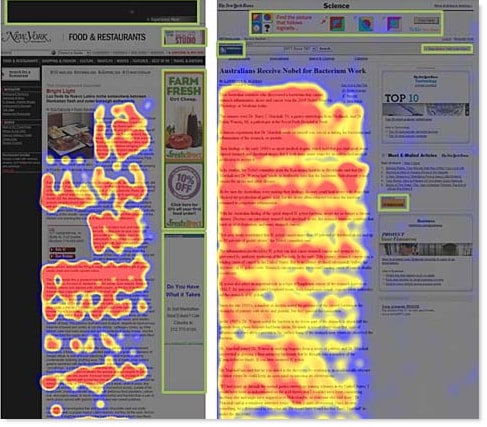
How Does it Impact Advertisers and Publishers?
While users are blissfully unaware of the ads that they skip, let alone of skipping the ads, the brunt of banner blindness is felt deeply by advertisers and publishers. Lower CTRs and CPMs end up hurting ad revenues, putting advertisers in a tough spot and further away from achieving their objectives.
In an attempt to grab user attention, advertisers give these banner ads a makeover by adding more information on the banner without changing the format or sizes of the actual ad spots and banners themselves. This leads advertisers to a catch 22 situation where too much information in the limited ad space runs the risk of diluting brand image and voice, and conversely, simpler ads go by unnoticed. And when ads still don’t perform well, advertisers are less likely to continue spending ad dollars.
That said, banner blindness does not mean that advertising is pointless or ineffective. Rather – it poses a challenge. The onus now falls on publishers and advertisers to innovate and adopt new solutions for creating and serving ads to not only advertise to but rather engage and interact with their audiences and capture their attention. Here are a few ways to ensure you meet your campaign objectives and bring back that ROI.
5 Methods to Battle Banner Blindness
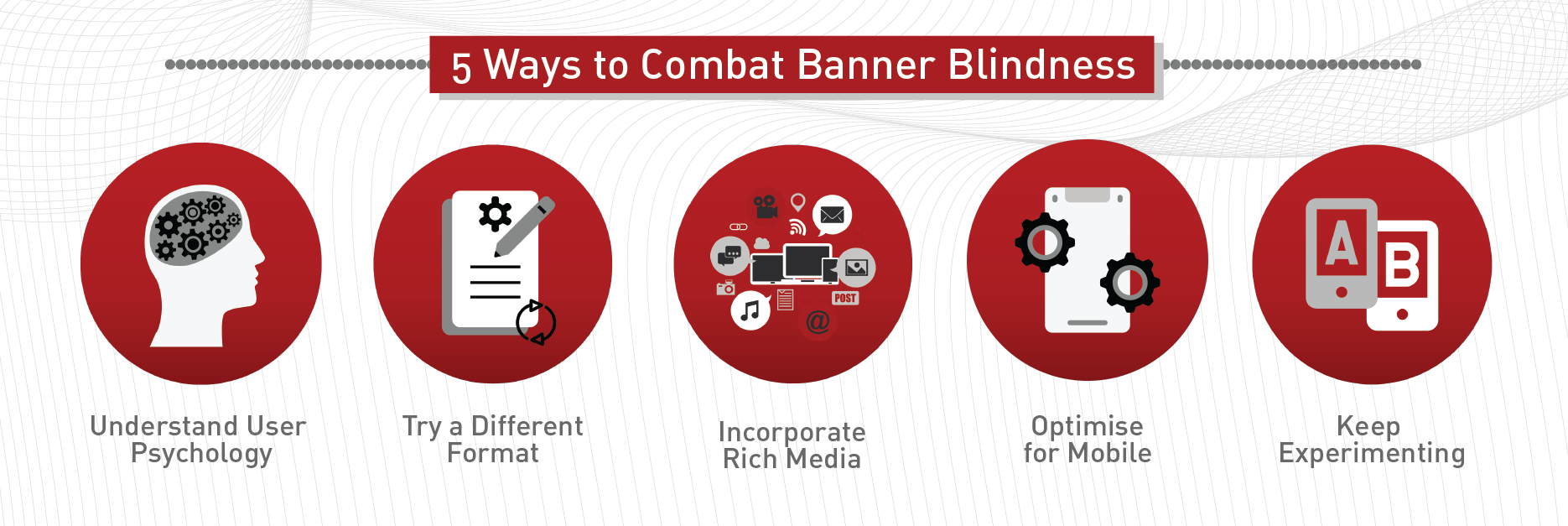
1) Understand User Psychology
Understanding user psychology and using it to appeal to the target audience is fundamental to creating successful ad campaigns. If publishers and advertisers study how users read web pages, they can make predictions and employ strategies accordingly.
Banner ads are known to disrupt user experience. This is because the ads served are not relevant to the user’s current web activity or disrupt the flow of content consumption. However, contextual targeting allows the right ad to be served to the right people at the right time by capitalising on content that is being consumed. This means that users are served promotional relevant to the content that they are consuming in real time. As a result, users are more likely to engage with the ad, improving the overall campaign performance! A win-win for everyone!
With mounting concerns on ethical and privacy issues surrounding behavioural targeting, contextual advertising is becoming increasingly popular. To learn the importance of contextual advertising, here’s a piece we wrote
2) Try a Different Format
Use different formats to attract an audience. The goal is to provide as seamless as possible a user experience. Native advertising is the way to go! Advertisements with a look and feel that cohesively matches its surroundings are guaranteed to garner more engagement. A study revealed that Native ads are viewed 53% more than banner ads and deliver a CTR 40 times greater than classic display ads. In fact, go one step further; spice up native ads with rich media and enjoy a boost in conversion rates by up to 60%. 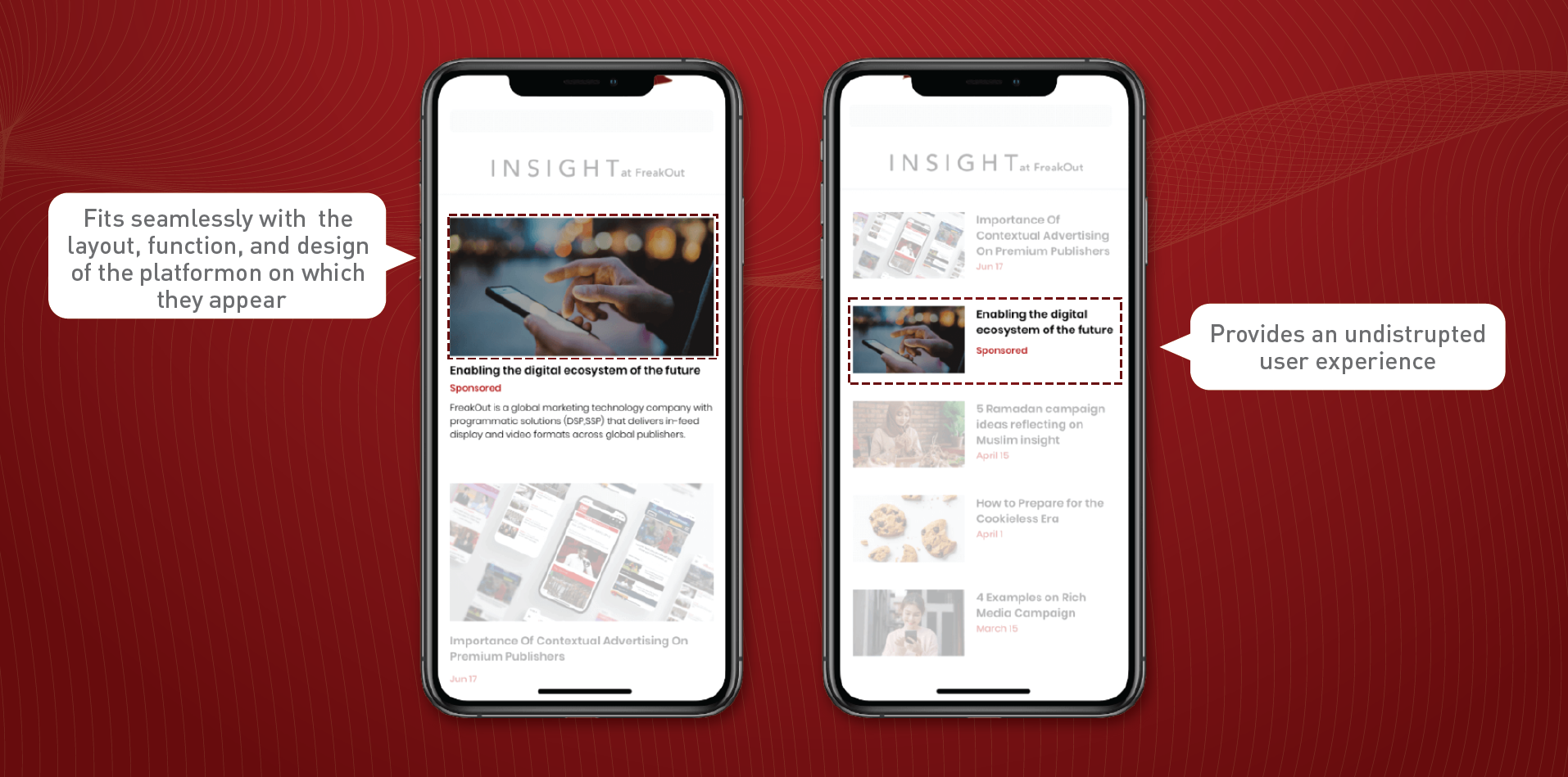
The findings from FreakOut’s latest survey is also in favour of Native Ads! Users voted native ads as the format which least hinders browsing experience. Native ads was also voted most informative compared to banner and widget ads.
3) Engage Audiences with Rich Media
Over the past few years, Rich Media Creatives have been widely adopted into advertising practices. Combining sophistication and creativity, rich media is designed to engage users and create a unique experience. This helps trigger user response with ease. It also provides interactive communication that is immersive. Users are allowed to manipulate elements and be active participants in an advertisement. For example, playing a game within an ad. 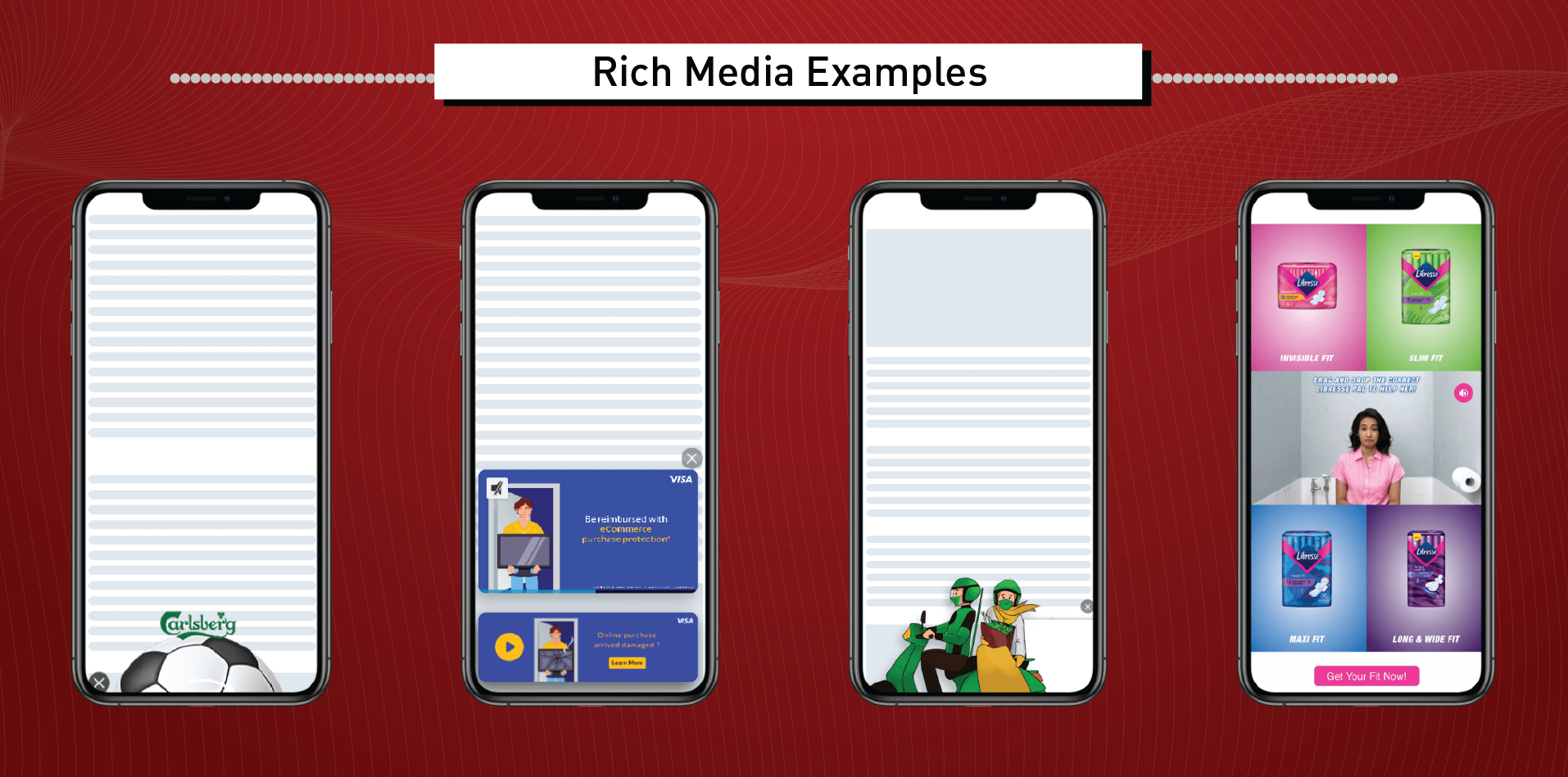
A study conducted by Gogulf concluded that 93% of marketers find interactive content effective in educating buyers. Additionally, 88% of them agree that interactive content is effective in distinguishing their brand from their competitors
[Learn more] 4 Inspirational Examples On Rich Media Campaign
4) Optimise Ads for Mobile
The future of mobile advertising beams with promise. According to Statista, there are currently 5.3 billion mobile users. Global mobile ad spend is forecasted to reach a whopping 413 billion US dollars by 2024, nearly double the record ad spend of 288 billion in 2021. It is important to note that while mobile advertising is growing exponentially, so is the competition. Mobile ads will not generate an ROI unless they have been optimised for mobile. Remember to consider the legibility of ads on mobile screens, ensure the publishing site is mobile friendly, and always have a clear CTA. There are also various tools available to analyse the performance of your ad.
5) Keep Experimenting!
Test, test, test! A/B test creatives, different formats, and placements. Try out various combinations of these components to identify the best mix for your campaign. Research colour schemes, keep up with design trends, and try out new technology! Break away from dated mobile advertising practices that do not bring about an effective ad spend.
For accurate results, avoid testing informally – manually turning on and off ad sets or campaigns leads to inconsistent delivery and jeopardises the credibility of results. With A/B testing, audiences are split evenly and are statistically comparable. Manual testing often involves overlapping audiences and therefore, cannot guarantee the same.
Conclusion
The advertising landscape is constantly evolving to accommodate changing user patterns and behaviours. Websites and browsers are reining in on advertising regulations, competition is intensifying, and now, users are learning to ignore traditional ads! Banner Blindness is real and it is hurting advertisers and publishers alike and in order to combat it, it is of chief importance to understand what caused it in the first place. Give ads the best chance at achieving their objectives and generating a solid ROI by adopting new technology and innovation within the advertising and marketing sphere.

